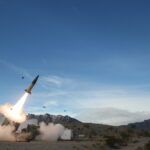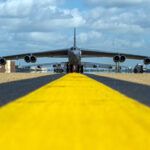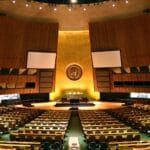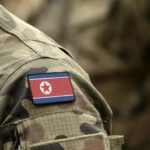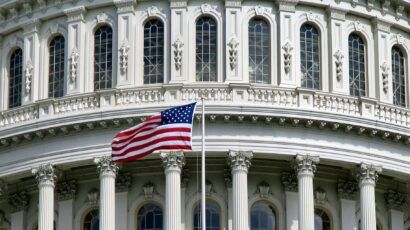Reconsidering the reversal: South Korea’s nuclear choices
By William Caplan, Kenneth B. Turner | February 21, 2017
US Defense Secretary James Mattis’s trip to South Korea and Japan early in February came at a time oddly reminiscent of another during the US–South Korea alliance. During the 1970s, in response to shifting strategic priorities after a change in US administrations, South Korea briefly considered pursuing an indigenous nuclear deterrent.
Then as now, South Korea was concerned that the United States might abandon its commitment to South Korean security—leaving the country vulnerable to threats from North Korea. The geopolitical factors of nearly 50 years ago bear an eerie resemblance to those seen today, making a reexamination of South Korea’s nuclear reversal a timely and useful exercise for the new administration when navigating its East Asian alliances.
The original reversal. In July 1969, in response to growing public dissatisfaction over the Vietnam War, newly elected president Richard Nixon revealed during a press conference in Guam that the United States would require Asian nations to increasingly fend for themselves rather than continue to be dependent on US deployed forces for their defense. In accordance with this new “Nixon Doctrine,” the United States began pulling 24,000 troops out of South Korea in 1970.
As a result of the troop withdrawal, coupled with the US rapprochement with the People’s Republic of China in 1972 and the perceived “abandonment” of South Vietnam after the Paris Peace Accords in 1973, South Korean policymakers became increasingly worried about the United States’ commitment to their defense. North Korea possessed a formidable military capability, and there were realistic concerns that the Korean conflict could go hot for the first time since the ceasefire of 1953.
To ensure his country’s security in the event of US abandonment, South Korean President Park Chung-hee created the Weapons Exploitation Committee to turn Seoul’s highly developed civilian nuclear power enterprise into a nuclear deterrent. South Korea made significant progress by constructing a light water reactor and procuring heavy water reactors and reprocessing capabilities from Canada and France, respectively. CIA analysts picked up on these developments, and the United States began to shut down proliferation avenues, pressuring international suppliers to renege on their agreements with South Korea. US National Security Advisor Henry Kissinger told Park that if South Korea got the bomb, the United States would indeed hang Seoul out to dry by pulling economic and military support. Satisfied for the moment by the increased attention from the United States, South Korea reduced its clandestine program and signed the Nuclear Non-Proliferation Treaty in 1975.
That same year, presidential hopeful Jimmy Carter told the editorial board of the Washington Post that he planned on following up on the Nixon Doctrine. Carter said he would immediately remove 5,000 troops from South Korea, with the goal of pulling all US forces off the peninsula. The former Georgia governor set off alarm bells in South Korea, reigniting doubts about America’s security commitment.
After Carter’s victory in 1976, he reiterated his commitment to withdraw US troops from South Korea by 1982. Seoul quickly doubled down on its nuclear development, ordering the Weapons Exploitation Committee to go full steam ahead toward an independent nuclear deterrent. In May 1977, Park indicated to Carter that South Korea would only terminate its nuclear weapons program if Carter retracted his statements. Widespread fears of a new nuclear nation in East Asia and a chain reaction of proliferation caused Carter to blink. He backed down by 1978, indicating that US troops were not going anywhere. South Korea’s nuclear program soon ground to a halt.
History repeats itself. The relationship between South Korea and the United States today is oddly reminiscent of the situation in spring 1977. South Korea is again facing a militarily powerful North Korea, but instead of a strong conventional military challenge, it now faces Pyongyang’s asymmetric nuclear weapons advantage. This danger is reinforced with every North Korean provocation, be it a nuclear test or missile launch, bellicose rhetoric by North Korean leader Kim Jong-Un, or a conventional attack on South Korean assets.
A more distant danger for South Korea, though no less important, is the threat posed by China and its increasingly revisionist attitude regarding its position in East Asia. One of the most critical aspects of this, China’s nuclear modernization, is a long-term challenge that South Korea will face when strategizing with other East Asian nations that are also attempting to counter China’s burgeoning regional power.
Neither of these situations are sudden developments: North Korea’s nuclear capability has been known for the better part of the last two decades, and China’s nuclear modernization has been a long time coming. The key change in South Korea’s strategic situation is the new US administration.
On the campaign trail, President Donald Trump gained popularity for his support of an “America First” strategy, whereby the United States would only intervene in conflicts if vital interests were at stake, and allies would have to pull more weight financially in order to continue receiving protection from America’s extended deterrent. South Korea was called out as a country that might need to take its defense into its own hands, when Trump suggested in March 2016 that an indigenous nuclear capability might be the answer to South Korea’s problems with North Korea and China. The sentiment is the same as was expressed by Carter in 1977: The United States cannot afford to be everywhere in the world and still protect its own vital interests.
Since the election, the situation has developed even further. The American public, at first skeptical of President Trump’s willingness to follow through on campaign pledges, has witnessed the administration follow through on a number of promises within the opening days of inheriting the White House. In addition, South Korea’s domestic political situation has become increasingly complicated with the impeachment of President Park Geun-hye, forcing the country’s attention to shift inward for a time.
On January 30, Trump reiterated his “ironclad” commitment to acting president Hwang Kyo-ahn for the defense of South Korea within the full range of US capabilities, including extended deterrence—the US promise to use its own nuclear weapons as a deterrent on behalf of allies. Whether Trump expects allies to pay more for American protection, as he suggested during his campaign, remains unclear. That leaves South Korea in a state of uncertainty regarding the actual depth of the US commitment, much the same as it was when President Carter stepped into the White House 40 years ago.
South Korea’s nuclear options. The South Korean government has a number of issues to consider at this time. While President Trump is currently signaling his commitment to Seoul, it is impossible to predict whether he might at some point impose increased costs on the South Korean government that are considered prohibitively high, with the alternative being the withdrawal of US forces from the peninsula or the nuclear umbrella. While the Trump administration has made deterring North Korea and China a priority, this feat will prove difficult without help from regional allies. These issues are likely to be clarified in the upcoming Nuclear Posture Review and Ballistic Missile Defense Review, both of which were recently ordered by the president. Until then, South Korea may weigh a number of options to enhance its security.
South Korea could continue its efforts to secure an increased US commitment to the country. Carrying over its diplomatic engagement with the Obama administration, South Korea would continue the deployment of the Terminal High Altitude Area Defense ballistic missile defense system and push to turn the bilateral alliance into a more NATO-like arrangement. In that vein, some defense planners and lawmakers in Seoul want to see a return of US nuclear weapons to South Korea for the first time since 1991, and would like to take part in joint nuclear planning—including target selection for nuclear contingencies.
While this request would ruffle the least number of feathers in Washington, granting significant parts of this wish would make little strategic sense for the United States. The only strategic US nuclear assets that could be deployed to South Korea are B-2 and B-52 bombers. As the force that would send the most visible signal of deterrence, the reintroduction of strategic bombers to the Korean Peninsula would almost certainly risk severe blowback from the Chinese, and the bombers would make easy targets in the event of conflict—for a relatively modest improvement in capability and assurance. Letting South Korean policymakers in on nuclear planning is similarly unlikely, due to a history of notorious leaks from within the South Korean defense community, as well as different target priorities. Absent any new leverage from South Korea, there is little reason for the United States to make a drastic change in its extended deterrent.
If South Korea wanted to go to the other extreme, it could enter into a clandestine crash-course nuclear weapons program to secure itself against the uncertainty of the Trump administration’s security commitments, much as it did in 1977. South Korea has a notable latent nuclear capability on paper: It possesses a significant civilian nuclear industry, and fields short-range ballistic and cruise missiles capable of carrying nuclear warheads. If South Korea determined that nuclear weapons were necessary for state survival, it would likely be more than capable of building a bomb within a relatively short time frame.
Over the past several years public opinion polls have indicated that there is increasing support among South Koreans for pursuit of an independent nuclear weapons program. While the results of these polls may be misleading, there may now be majority approval.
However, a nuclear South Korea is not the most likely scenario, due to significant changes since the late 1970s. South Korea would either have to withdraw from the Nuclear Non-Proliferation Treaty and expel IAEA inspectors, or attempt to duck the international arms control regime and present its bomb to the world as a fait accompli. Thanks to the IAEA’s safeguards and inspection provisions, South Korea would probably not be able to hide its program, and it would either have to double down on becoming a rogue nuclear power and pull out of its treaty obligations or stop its weapons development. In the nuclear power realm, this would mean a cessation of civilian nuclear assistance to South Korea, a consequence that would be harmful to its economy and might even hamper further weapons development. In the broader international context, South Korea would likely become an international pariah, sanctioned similarly to the North Koreans and abandoned by the United States. Finally, a small nuclear arsenal unprotected by the United States would make South Korea an attractive target for a first strike by North Korea or China.
The other option is to use the threat of a nuclear weapons program to extract concessions from the United States, in an attempt to make Washington kowtow to Seoul as it did in 1978. South Korean policymakers are acutely aware of the downsides that a nuclear weapons capability would carry with it, yet may be able to convince the United States that it is considering this capability in order to extract some concessions—for example, dropping any demand that South Korea pay more for the extended deterrent, or receiving a more diverse array of capabilities from the United States.
Given Mattis’ trip to Asia and Trump’s recent statements, the administration appears to be walking back some of the campaign rhetoric. Deterring North Korea and China seems to be a priority for the new administration, so South Korea has some leverage should its leaders decide to use the nuclear bargaining chip. However, President Trump may call the South Korean bluff, correctly assessing that they would prefer the status quo to charting their own path.
A nuclear South Korea does not seem likely, but the events of the 1970s demonstrate that the country is not beyond considering the nuclear option. President Trump should take the threat seriously, and continue along a path that reassures South Korea and reiterates the US commitment.
The views expressed in this article are those of the authors and do not necessarily reflect the official policy or position of the National Defense University, the US Department of Defense, or the US government.
Together, we make the world safer.
The Bulletin elevates expert voices above the noise. But as an independent nonprofit organization, our operations depend on the support of readers like you. Help us continue to deliver quality journalism that holds leaders accountable. Your support of our work at any level is important. In return, we promise our coverage will be understandable, influential, vigilant, solution-oriented, and fair-minded. Together we can make a difference.
Topics: Nuclear Weapons, Voices of Tomorrow



